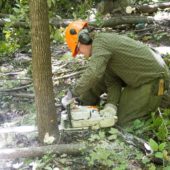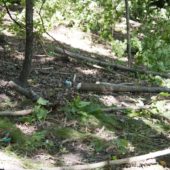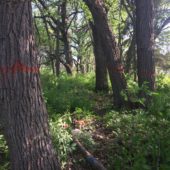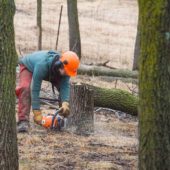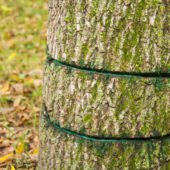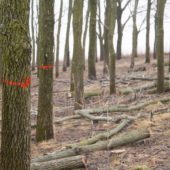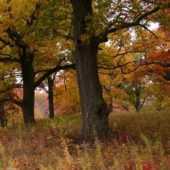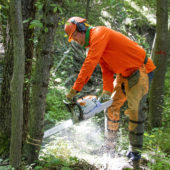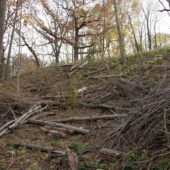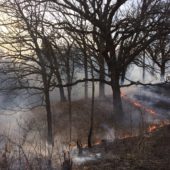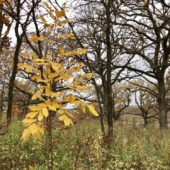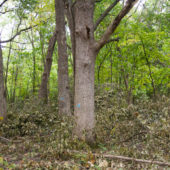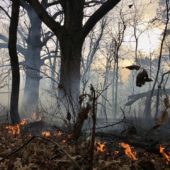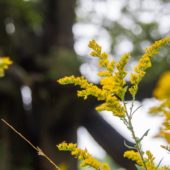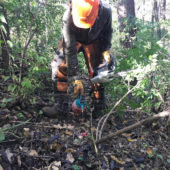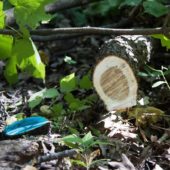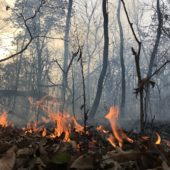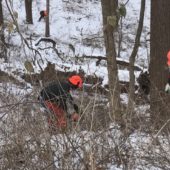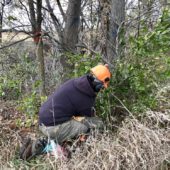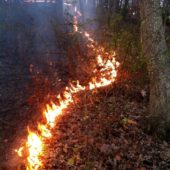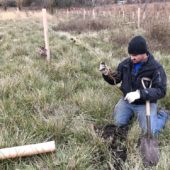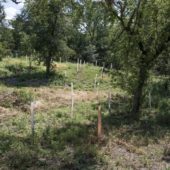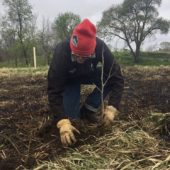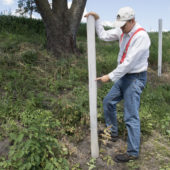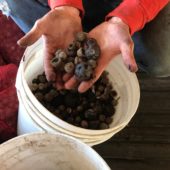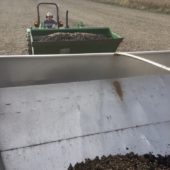Restoration
See your woodlands come alive as you manage them for wildlife habitat, walkability, aesthetics, erosion management, and timber value. We can help you accomplish your specific objectives by restoring dynamic, native plant communities that are well adapted to your land.
Transform your woodland with forest stand improvement to enable the most desirable species to thrive. Reinvigorate an oak savanna remnant to see native prairie take root beneath ancient oaks and shagbark hickories. Let native woodland wildflowers bloom for future generations by removing honeysuckle, autumn olive, and other invasive species. Reforest an old woodlot, a poorly yielding crop field, or a large lawn to create a place of enduring value.
Forest Stand Improvement
Shape your woodland to meet your goals for wildlife habitat, recreation, aesthetics, and timber value. Forest stand improvement is the intentional removal of lower value trees to enable higher value trees to thrive. To promote wildlife habitat, we select for diverse trees and shrubs that produce high quality nuts, fruit, and shelter. Likewise, if a goal is to increase timber value, we select for trees with the greatest potential sale value in Iowa, including black walnut, shagbark hickory, and white oak.
Wildlife habitat and timber value are not mutually exclusive. Nuts produced by timber species provide a critical source of fall and winter nourishment for wildlife. Forest stand improvement speeds the growth of these trees, reduces the number of years to reach maximum nut production, and increases the number of nuts produced by up to seven fold.
Oak seedlings require direct sunlight and management from faster-growing competition to reach maturity. Prior to European settlement, disturbance from woodland fires, bison and elk grazing, and passenger pigeons created openings where oaks could successfully regenerate. Today, only a third of Iowa’s oak woodlands have sufficient levels of regeneration. Forest stand improvement can bring sunlight into the canopy and reduce competition so that oak woodlands can continue to thrive.
Oak Savanna Restoration
Bring back this stunning ecosystem of widely scattered oaks with prairie wildflowers blooming beneath them. Iowa’s native savanna is home to specialists such as wild hyacinth, purple milkweed, barn owls, and spotted skunks, as well as many prairie and forest plants.
Remnant savannas are easiest to spot in pastures where grazing has prevented other trees from growing up around the mature oaks and hickories. Few native prairie plants can survive decades of continuous grazing, nor can the next generation of oak trees emerge.
In the absence of both cattle and fire, other savannas have been swallowed up into forests of faster-growing trees like maple and basswood. Without sunlight in the lower canopy, many of the oak trees’ lateral branches have withered. On the shaded floor of the forest, few oaks have successfully regenerated and prairie plants have disappeared.
Whether your oak savanna remnant is currently a pasture or forest, Prudenterra can help you restore it by managing livestock, removing non-savanna trees, and introducing prescribed fire. In cases where native plant communities and seed banks are not sufficient, restorations are augmented with oak and shagbark hickory seedlings and local ecotype prairie seed. With strategic intervention, this beautiful community of plants and wildlife can thrive once again.
Invasive Species Removal
When invasive species like tartarian honeysuckle, autumn olive, or buckthorn appear in a woodland, native shrubs and wildflowers are cast into the shade and quickly outcompeted. The consequences of an invasive shrub infestation are severe–beneath the dense shrub foliage, the vegetative layer dies out, leaving bare soil that easily erodes. Native birds, pollinators, and other wildlife suffer from poor nutrition and cover as their native habitat disappears.
Prompt action can keep native woodland communities intact. A combination of techniques are used to manage invasive shrub species. These include cutting and applying herbicide on the stumps, spraying herbicide on the bark around the base of the plants, foliar applications during the early dormant season, goat browsing, and prescribed fire. Prudenterra can determine which techniques are the best fit for your woodland, and can implement them to help you keep the wildflowers blooming for years to come.
Reforestation
Plant and establish a new generation of trees on your land. Transform agricultural land, a low quality woodland, or lawn into premium wildlife habitat and high quality timber. Prudenterra can help you select and plant diverse, native tree and shrub species using one of four reforestation methods:
Bare root planting. High quality, cost-effective seedlings are purchased in bulk. They can be planted in March-April or November-December while ground is unfrozen but seedlings are dormant.
Potted tree planting. Potted seedlings can be planted any time during the growing season. May be available in larger sizes and different species than bare root seedlings. At a premium cost, potted trees are appropriate for small plantings or in residential settings.
Direct seeding. In sites with a high edge-to-area ratio, direct seeding reduces deer browse pressure on each seedling. Seeds (acorns, hickory nuts, black walnuts, etc.) are collected and scattered on a prepared seed bed in October and November.
Seed tree. If mature, nut-producing trees were left in place after a timber sale or another type of disturbance, the seeds from these trees can be used in reforestation. This works especially well if the ground is scarified to enhance seed to soil contact.

